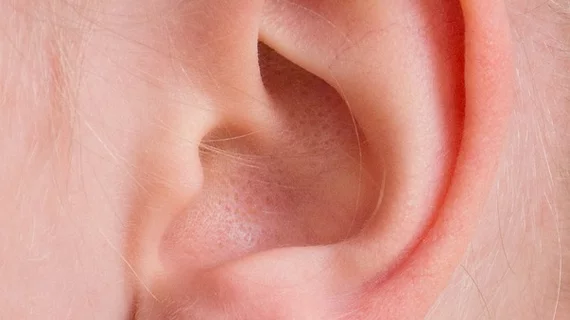The presence of cardiovascular comorbidities is associated with accelerated hearing loss in patients older than 80, suggesting those conditions could be treated to slow this age-related decline.
Lead author Kapil Wattamwar, MD, with Yale School of Medicine, and colleagues published these findings June 14 in JAMA Otalaryngology, noting the relationship is a two-way street.
“Treating underlying cardiovascular disease may prevent or slow the progression of hearing loss, and conversely, hearing loss may suggest underlying cardiovascular disease,” the authors wrote, adding that hearing loss is associated with increased morbidity and mortality, as well as a lower quality of life.
Wattamwar et al. studied 433 patients older than 80—a population that is expected to double in the United States in the next 40 years. Previous studies of age-related hearing loss have primarily focused on groups in their 70s or older, but those at more advanced ages have been shown to have a steeper decline, especially in the 10th decade of life.
The cohort in this study was 89 years old on average and 67 percent female, likely because women have a longer life expectancy and the study only included elderly patients. Audiologists assessed hearing loss using decibel thresholds and a word recognition score.
Wattamwar and colleagues found:
- Compared to people with no cardiovascular comorbidities, those with at least one condition averaged additional hearing loss of 5.47 decibels when measured by low-frequency pure-tone average (LFPTA). The comorbidities studied included coronary artery disease (CAD), hypertension, diabetes, history of cerebrovascular accident and smoking.
- Participants with at least one comorbidity experienced a LFPTA hearing loss of 1.90 decibels per year, compared to 1.18 per year in those without any cardiovascular disease.
- CAD had the highest association with hearing loss of any of the conditions studied. The presence of CAD was linked to worsening word recognition equivalent to three extra years of age-related decline.
- The comorbidities appeared to impact men more than women. CAD in men was associated with 8.81 decibel hearing loss in mean LFPTA and 6.82 decibel hearing loss in high-frequency pure-tone average but only a 4.27 decibel LFPTA loss in women. Regarding hypertension and diabetes, only men with those conditions had statistically significant declines in hearing when compared to healthy controls.
“It is possible that due to influences from estrogen, vitamin B12, and folate, which are otoprotective and generally present at higher levels in women, CVD has a stronger effect on hearing in men than in women,” the researchers wrote. “Additionally, the women in this cohort may have had these conditions for a shorter duration or to a less advanced extent, as they benefited from the cardioprotective effects of estrogen premenopausally.”
According to the authors, several mechanisms have been proposed to explain the link between CVD and hearing loss. Most of them stem from the idea that CVD compromises blood flow to the cochlea.
“The reduction may be due to microvascular changes in the stria vascularis or to macrovascular changes of the internal auditory artery,” Wattamwar and colleagues wrote. “Decreased blood flow in the cochlea may directly cause stereocilia cell death. Insufficient nutritive supply to the inner ear may disrupt the electrolyte balance in the endolymph, causing electrical dysfunction of stereocilia.”
Aside from the participants being mostly women, another limitation of the study is it didn’t take into account the severity of diseases; CAD, diabetes and hypertension were considered as binary variables.

